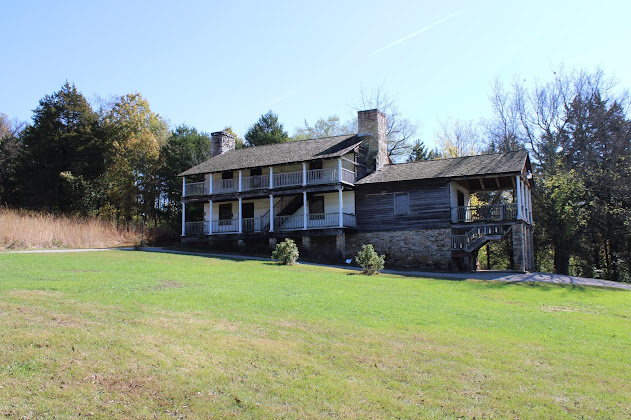Nestled in seemingly the middle of nowhere among beautiful rolling forest roads and old farms is the Daniel Boone National Historic Site. Comprising of nearly 300 acres in Defiance Missouri, the historic site is made up of the hose where Daniel Boone died as well as 15 other historically significant buildings gathered from around Missouri. These buildings slowly were bought over the course of 50 years and moved to the site either wholly or in pieces to be rebuilt as they originally were.
Daniel Boone
The original attraction to the site is of course Daniel Boone's home, which the site and many nearby roads are named after. So who was Daniel Boone? The more appropriate question to ask would be what was Daniel Boone not? He is remembered as a Kentucky pioneer and hunter as well as a blacksmith, land surveyor, business man, soldier and statesman. His travels through as far as eastern Kansas paved the way for future westward explorers such as Lewis and Clark in 1803. He is most famous for his epic travels through American Indian controlled territories during the French and Indian War. These resulted in him being captured by the Shawnees tribe. He was then transported to Ohio where, after gaining the trust of of the Shawnee Chief, he was given the honorary name Big Turtle. In 1778 he escaped to warn locals about a Shawnee plot to murder them.
His numerous adventures made him a celerity during his time whos adventures were included in many books as well as even a television series that ran from 1964-1970. In 1799 at the age of 65, Daniel Boone, his wife Rebecca Bryan and some of his 10 children moved to what was then Spanish governed Missouri. While in Missouri, Daniel Boone and his wife primely lived with their oldest children.
This brings us to the construction of the Historic Boone Home. Nathan Boone was only eighteen when he and his new bride, Olive Vanbibber, moved to Missouri to be closer to his father. Their home is estimated to have taken seven years to build though exact dates are unknown the construction of their home is thought to have taken place between 1803 to 1810. It was in this home in 1820 that Daniel Boone died. He was 86 years old. The bedroom where he died was recorded as being the small bedroom on the ground floor.
The front of the home. By modern tastes this looks more like the back however originally there was a road leading from the Missouri River up to this side of the house.
The back of the home.
The bedroom where Daniel Boone died
The kitchen and dinning room are in the basement level. This allowed for the Boone family to dine in cool conditions during hot Missouri summers. The limestone walls act as an excellent retainer of cool air in the days before air conditioning
Off to the side of the Boone Home is one of the 15 other early 19th century residences that call the historical site home. The Sappington/Dressel House was constructed between 1804-1810 by Zephaniah Sappington, a solider in the War of 1812 and the son of the Revolutionary War veteran John Sappington Jr. The home remained in the Sappington family until it was purchased by Henry Dressel. Dressel's son lived in the home for his entire life of 100 years. In order to preserve the home it was purchased in 1987 and dismantled over 104 days to be transported and rebuilt at the Historic Boone Home Site.
The back view of the house. All staircases were external, a popular architectural feature of the time.
An 1837 barn on the property
A hen house
Although this kiln is a 2000 reproduction it was based off of early 19th century kilns.
The 1838 Mount Hope School House was rescued from demolition in St. Paul Missouri and brought to the site. A one room schoolhouse such as this would have taught ages ranging from 5 to 16.
Another rescued building, the Old Peace Chapel is an 1850s church saved from New Melle, MO.


















